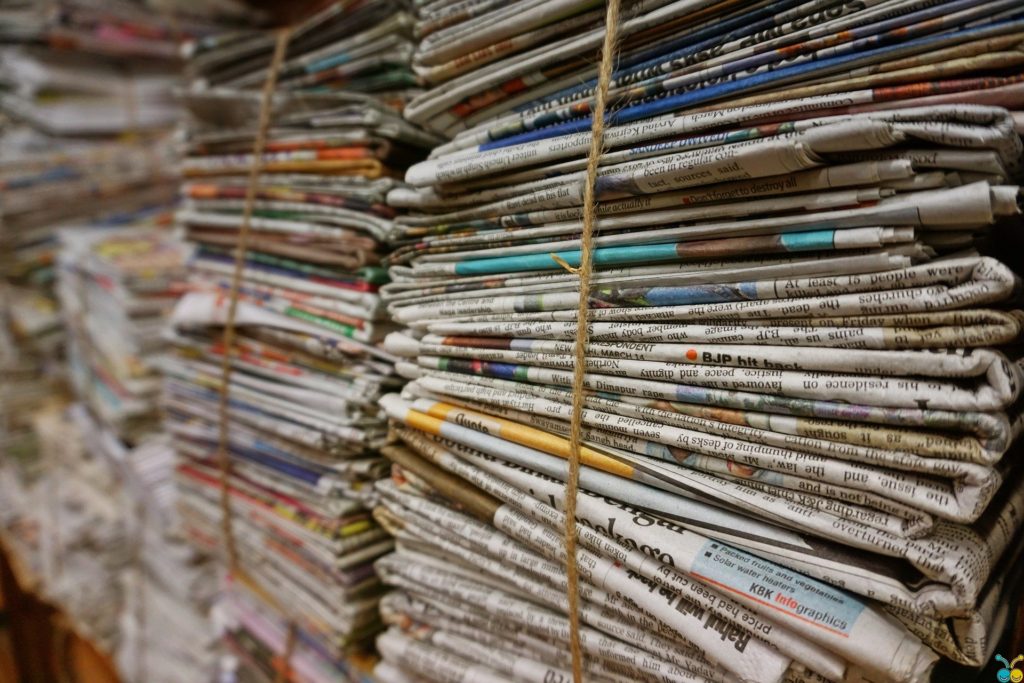A more sustainable world is immerging following increased awareness of the negative impacts that our day to day practises are having on the planet.
With consumers continually searching for greener alternatives, and governments introducing regulations which ensure practices are more efficient and align with their environmental targets, various industries are facing a reshape. From transport and food to technology, manufacturing and print!
This positive movement hasn’t gone unnoticed in the print industry, or here at Brightsea, and there are several green initiatives which have been embraced during the past decade.
In our latest blog, we’ve looked at some of the key initiatives to be introduced in print, helping to make the industry more environmentally friendly and conscientious.
Inks
Historically, the inks used in print have been petroleum-based. Although effective at producing a high-quality finish, their impact on the environment is much higher when compared to the alternatives available, such as vegetable-based inks.
Volatile Organic Compounds
They contain substances known as volatile organic compounds, some of which include xylene and benzene. The compounds are released in the printing process, and during maintenance of the machinery, some of them are known to have adverse health effects.
Not only can they be harmful to humans, when they are disposed of inappropriately, the contact with the natural environment can be of a huge detriment, causing air and water pollution.
Vegetable or Soy-based Inks
The welcomed alternative is vegetable or soy-based inks! These have revolutionised the industry and have a much lower impact on the environment. Rather than crude oil being the carrier, a sustainable and natural source is used.
The quality of print from a vegetable-based ink continues to improve following its initial introduction, and now, those who opt for this environmentally light alternative can expect bold colours, popping edges and beautiful glossing!

Responsibly-Sourced Paper
The protection of the forests across the globe frequently makes headlines and for very good reason. The result of this is that the paper market now has a wealth of choice when it comes to the sustainability of the source. The main choice of eco-friendly paper is either recycled or FSC Certified – each having their own benefits.

What is FSC Certified?
A global organisation, the Forest Stewardship Council (FSC) ensures sustainability and viable management of forests across the world. Their role is becoming increasingly important, as they safeguard woodland areas and promote sustainability.
Here at Brightsea, we are committed to sustainable forest management and eco-friendly printing services, and proudly carrying the FSC logo on our products! We understand that it’s no longer acceptable to have ensured your own practises are as green as they can be, but those who supply our business have to be too!

What is Recycled Paper?
Recycled paper ranges from being made from 100% recycled material, to types which use some ‘virgin’ wood pulp.
What to know more about paper recycling? Take a look at our Fact File!
Energy Usage
Businesses across a spectrum of industries are all aiming to reduce the amount of energy they use. Appliances and machinery are regularly being reviewed and updated to ensure that they are the most energy-efficient version available. Whether it’s the printing machine, the staff room refrigerator, lightbulbs or the building’s heating system, being well-maintained and up to date ensures that each is performing at the optimum and using the least energy possible.
Avoid Overprinting
Historically, it was best to have too many than not enough, but the tables have turned in recent years as businesses and consumers opt for a more sustainable approach. Overprinting is a thing of the past with the use of technologies which enable on-demand and variable data printing. Rather than over-orders being stacked on shelves to fulfil the ‘just in case’, custom printed materials can be produced to meet the demand in a relatively short time.

Reduce the Volume of Waste Going to Landfill or Incineration
Through the processes to the product, reducing waste at every stage of production is vital! The print industry is taking large strides when it comes to reducing use and recycling, with the aim of limiting what goes to landfill or is incinerated.
Waste is being segregated to ensure each material is processed in the correct way. Paper is recycled, while the chemicals and plates used are handled by industry specialists.
Here at Brightsea, by working with our suppliers and customers in an environmentally conscientious way, we are striving every day to reduce our impact on the environment.
To find out more about our printing services and how the industry is shaping up environmentally, get in touch!

